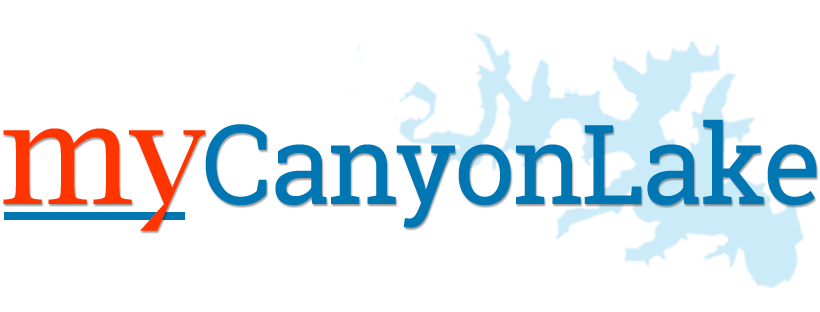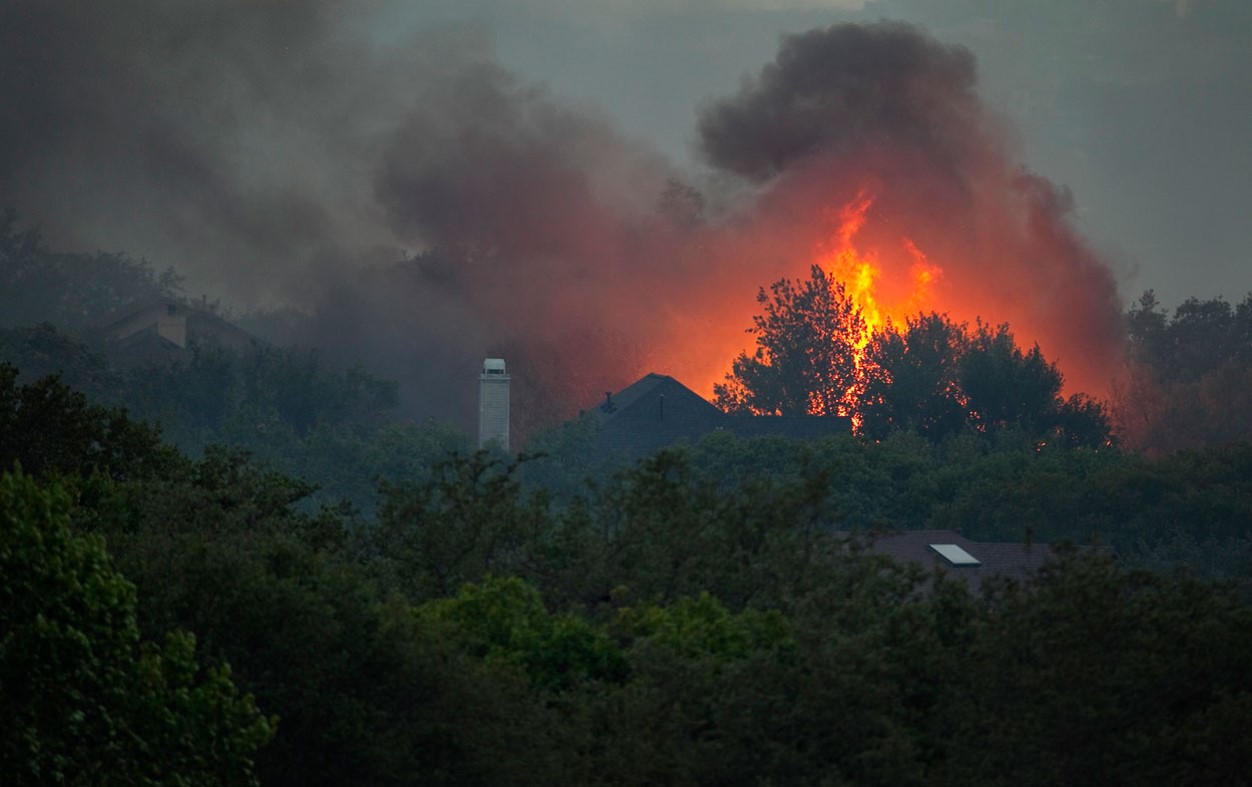Complaining about California is a Canyon Lake pastime, but the joke could be on area residents who may not realize they’re located in the same type of ‘wildland urban interface’ (WUI) as the 12,000 homes, businesses, schools and other types of buildings that have burned to the ground over the last nine days in the Los Angeles area, killing 24 people and forcing an estimated 100,000 others to flee.
Canyon Lake and parts of the New Braunfels area share a similar topography, said Canyon Lake Fire Chief Robert Mikel. Trees and vegetation are close to homes and hills can exacerbate fire conditions.
In a WUI, developed areas intermingle with undeveloped areas, according to Texas A&M Forest Service. There are 14,500 communities at risk of wildfire in Texas.
“You may believe that you don’t have a WUI problem and that WUI fires only occur in western states, but more than 60,000 communities in the United States are at risk for WUI fires,” says the U.S. Fire Administration, which falls under the authority of the Federal Emergency Management Agency (FEMA).
Extended drought is playing a significant role in the Canyon Lake area’s wildfire risk.
In Comal County Commissioners Court today, Fire Marshal Kory Klabunde urged commissioners to reinstate the burn ban as the Keetch-Byram Drought Index (KBDI) approaches the 500 mark. By law, the county judge must issue a burn ban when the KBDI reaches 500 points.
“Along with that, we have a cold front coming in that’s going to have higher wind speeds and low humidity, so it’s creating more of a fire danger for us,” he said.
Weather conditions and fuel type play a big role in fire behavior, how quickly fires spread, and how difficult they are to contain and extinguish, Mikel said.
“Winds, humidity and drought conditions can play major roles,” he said. “Analyzing these factors is part of the wildland firefighting training program.”
Mikel said this year’s fire danger isn’t unique.
Since Jan. 1, firefighters with Canyon Lake Fire/EMS, also known as CLFEMS but officially called Comal County Emergency Services District 3, have responded to 32 calls for grass/brush fires, unauthorized controlled burning and authorized controlled burning.
Five calls were for grass/brush, 18 were for unauthorized burning, and nine calls were for authorized controlled burning.
Mikel said nauthorized burning means fires occurred during the burn ban or were unattended at night. These types of calls include burning done in fire pits and were not necessarily grass or wildland fires. Authorized controlled burning means fires were not necessarily controlled and required CLFEMS intervention and extinguishment.
“These numbers are higher than a typical January but not out of the ordinary for a period of extended dry weather like we have had,” he said.
It was a different story for Texas in 2011, which Mikel described as a terrible year for Texas.
In 2011, a large fire in the Bastrop area burned many homes to the ground. According to the Forest Service, 30,896 wildfires burned 3,943,770 acres in Texas that same year.
This year, firefighters local firefighters are as ready as they can be for WUI fires.
Mikel said Canyon Lake crews are trained in wildland firefighting operations, which differ from structural firefighting.
“Instead of solely relying on water, they will often cut firebreaks and even burn areas of vegetation to slow and prevent the spread of fires,” he said. “It takes special training to know what tactic to use, and one of the advantages of our firefighters deploying to other areas of the country is that it allows them to learn and practice those tactics there so they are more prepared for fires here.”
Last weekend, two Canyon Lake Fire/EMS firefighters deployed to California, driving a dedicated fire truck provided by the Texas Intrastate Fire Mutual Aid System (TIFMAS).
“CLFEMS works closely with the other fire departments in Comal County, but we also work with Hays and Blanco counties when additional personnel and support are needed,” Mikel said.
The state can provide resources for larger wildland fires, including bulldozers, hand crews, engine strike teams, and firefighting aircraft.
New Braunfels
Jeff Kelley, emergency management coordinator with Comal County’s Office of Emergency Management, did not respond to a request for comment from MyCanyonLake.com regarding the kind of coordinated efforts area officials would make in response to a serious wildland fire.
But the City of New Braunfels and New Braunfels Utilities issued a joint press release today reassuring residents the city’s local firefighting infrastructure is prepared for fires similar to California’s.
“The City of New Braunfels Fire Department (NBFD) is highly prepared to respond to urban interface fires,” they said. “With a Class 1 ISO (Insurance Services Office) rating, NBFD relies on top-tier equipment, well-trained personnel, and efficient water distribution systems. In addition, NBFD is a proud member of TIFMAS and Texas Task Force One (TX-TF1), which is why three NBFD firefighters have been sent to assist with the California wildfires, lending their expertise in managing large-scale, wildland-urban interface fires. Their specialized training and experience enable them to respond effectively to complex emergencies across the country and within our community.”
The city also has invested in hybrid squad units that make NBFD one of the region’s most mechanically equipped departments for wildland fires.
New Braunfels said NBFD also has mutual aid agreements with surrounding fire agencies to ensure additional staff and equipment can be brought in to manage large-scale wildland fires.
One mutual aid agreement includes Joint Base San Antonio (JBSA), which will bring in military staff and equipment if necessary.
New Braunfels Utilities (NBU)
NBU continuously monitors and evaluates the city’s water system to ensure that all areas meet required flow and capacity standards, according to the press release.
No known subdivisions or areas of New Braunfels are currently experiencing limited fire flow. All new developments must meet fire flow and hydrant access criteria outlined in the 2021 International Fire Codes.
Fire hydrants are placed every 300 feet in high-density commercial areas and every 600 feet in residential areas to ensure adequate access for fire suppression.
Homeowners
The best actions homeowners can take to protect themselves and their homes against wildfires is to utilize the tools and information on the Texas A&M Forest Service website on preparing for wildfires.
“In my opinion, the most-important would be creating a defensible space around your home,” Mikel said.
Click here for information about creating defensible space with fire resistant landscaping, fire resistant construction, and improving access for emergency responders.




